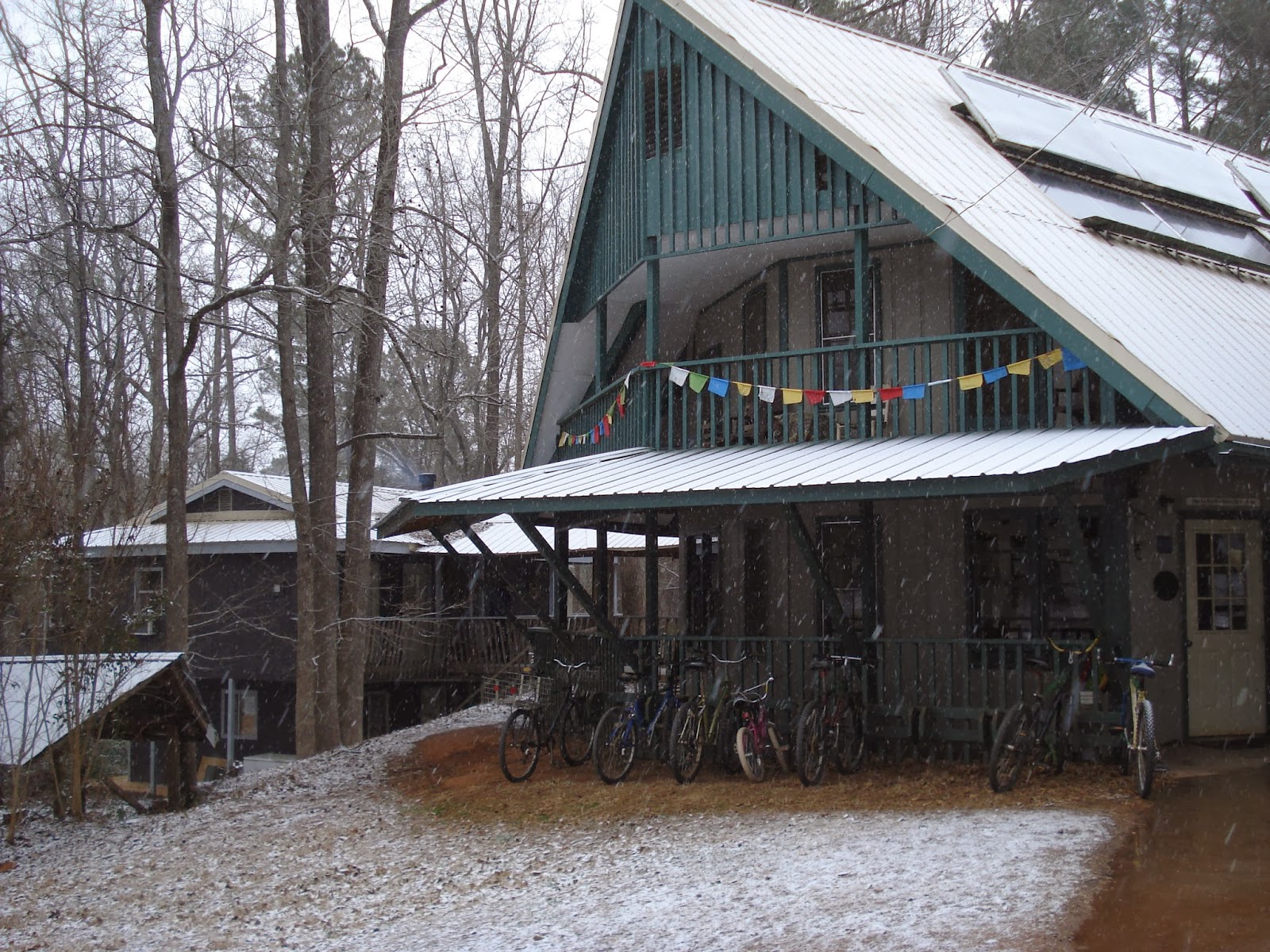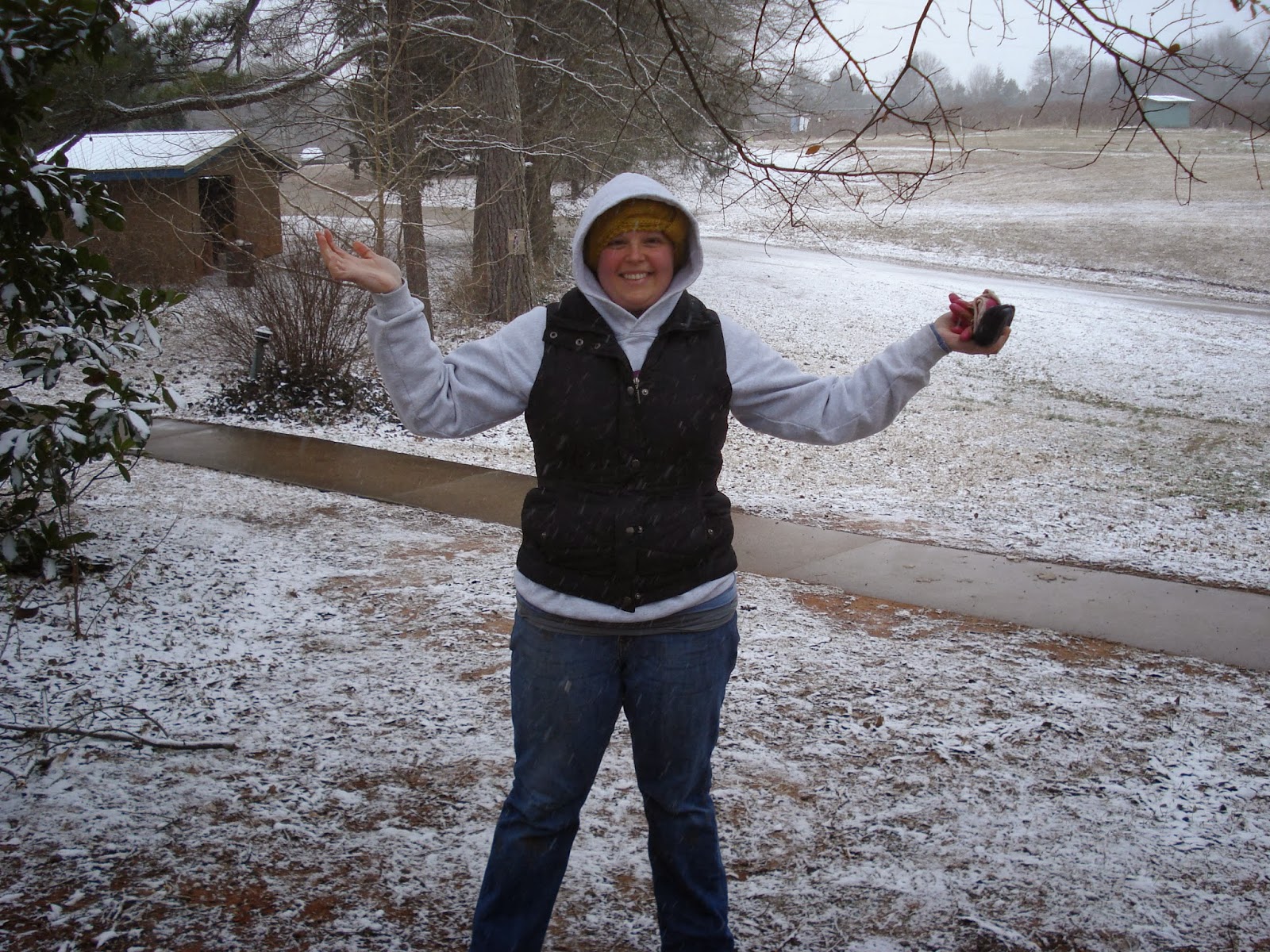Hello all,
As our time at Jubilee draws to a close (only 1 week left!), we would like to thank everyone that journeyed with us during our time here, either through prayer, a visit, or reading our blog. It has been great to feel the support of those who love and care about us. As our last week at Jubilee approaches, we are beginning to look ahead, to Pennsylvania, to finding an apartment and jobs and re-adjusting to life outside of Jubilee. We have been in email contact with Habecker Mennonite Church, and getting involved with them and the 80+ Karen refugees they have in attendance brings us excitement. Leaving Jubilee will most certainly be a bittersweet experience for both of us.
As my final post from Jubilee (I suppose we could continue the blog after Jubilee), here is a reflection I shared at worship last Sunday on the road to Emmaus story, found in Luke 24:13-35, reading the scripture before the reflection is recommended.
Road to Emmaus Reflection (5/4/14)
Today we have a fairly long story that appears exclusively
in Luke’s gospel, the Walk to Emmaus. One
thing to note, as we look at this story, is that Luke is a very precise writer,
he chooses his words carefully, and throughout his gospel he proves to be an
excellent story-teller. Even if there
are some details of his story that seem confusing or problematic to our modern,
rational worldview, we should trust that they are not arbitrary, that Luke has
a theological reason for telling this story the way he does.
Luke begins his first appearance story with two unknown
followers of Jesus on a journey. This
comes right after the story of the women finding the empty tomb, and according
to Luke’s timeline, happens later on that same day. It is interesting to note that the first
appearance in Luke’s gospel occurs to two completely unknown disciples, not
members of Jesus’ inner circle. One of
the disciples remains nameless for the entire story, and the other, Cleopas, may
be a Greek. This detail follows the
theme of Luke’s concern for the marginal and powerless, as he tells of two
low-level disciples, one not even a Jew, and makes it the centerpiece
appearance story in his gospel. Later in
verse 34, Luke mentions an appearance to Peter in passing. He’s aware of the tradition, and thinks it
should at least be mentioned, but to him it doesn’t even rate more than two
sentences. I’m already beginning to like
this story, because it’s a story about the other disciples. Peter was a great disciple, and there are
many people like Peter, people with great passion and vigor. People who are either dying for Jesus or walking
on water after him, who live in the extremes and don’t spend too much time in
between. They are certain of their faith
in Jesus, certain that he will do as he said, and willing to boldly and
passionately follow. But I’m not a Peter,
and this story is encouraging, because it reminds us that Jesus doesn’t just
appear to the Peters and Pauls and the super-disciples. He appears to the other disciples too. He appears to those who are confused, unsure,
and skeptical. He never appears to
people who are not trying to follow him, but he doesn’t require perfect trust
and obedience either, he appears in the messiness of life.
So, these two disciples are walking and talking, and feeling
pretty dejected about the events of the last week, and Jesus appears,
incognito, and asks them “What’s the matter?”
Well, after they overcome their initial shock, that anyone
could possibly not know what’s been happening, they launch into a whirlwind
account of the last few years with Jesus.
They talk about how he was a great prophet, how he did many amazing
miracles, and how he was arrested and tried.
And just as they get to the turning point of their story, right after
they say that he was crucified, they let on to why this all really matters to
them. It was common for criminals and
insurrectionists to be executed by crucifixion during this time, and it would
have been sad to lose a close friend, but there was something more going
on. In verse 21 they say “But we had
hoped that he was the one to redeem Israel.”
And then they go on to talk about the empty tomb and express their
confusion over it and what it might mean, but that declaration in v. 21 is the
reason for their joyless journey - “we had hoped that he was the one to redeem
Israel.” Just a week ago they were bursting
with excitement, with hope, with expectation; they thought it was really
happening, the Messiah was establishing his kingdom. The hope of Israel for generations was coming
to fulfillment. They had listened
intently to Jesus’ teachings, seen his healings, and they thought they knew and
understood what it was all about. The
Romans were about to be overthrown, and Israel would once again be free under
the benevolent reign of King Jesus. But
then it all came crashing down with Jesus’ crucifixion. Their hopes are completely crushed,
everything they’ve built their lives around for the past few years turns out to
be nothing more than an unfulfilled dream.
And now they are despondent and confused and hopeless. They had high hopes for Jesus, and in what to
them seems like the long run, things went horribly wrong.
Oftentimes in our lives, that’s how we feel too. That’s why this is a story for us, it’s a
story for all those who have had great hopes of who Jesus might be. It’s a story for the disappointed, the
disheartened, the disenchanted. Maybe we
had hoped that Jesus would be the answer to our inner longing, that he would
bring us peace and joy, but instead we still feel restless and unsatisfied with
life. Maybe we had hoped that Jesus
would bring us unity, that we might feel the excitement of the early church as
all gathered together in one mind and with one purpose. But instead we are left with our arguments,
our disagreements, our pettiness.
Perhaps we had hoped, against hope, that Jesus might bring miraculous healing
when there was no other way, but instead we are left with pain and loneliness. We have all experienced disappointed hopes,
individually and corporately, and in this story, Luke lets us know, that in the
height of our disappointment and confusion, Jesus is right there with us, we
just haven’t noticed him yet. This is
not an easy out from pain, not a declaration that if you put your faith in
Jesus you’ll feel better. In this story,
Jesus doesn’t reveal himself to the disciples instantly. He doesn’t cut them off and say, “Sorry you
feel that way, but I’m here, I’m risen, there’s no need for sadness.” He lets them express their anguish, he lets
them share their disappointed hopes, and he listens. Jesus is with us, through life, sometimes he’s
obvious, sometimes he’s hidden, but he’s always listening.
After the disciples tell Jesus about their frustrated hopes,
Luke has a perfect opportunity for the big reveal. After they finish their lament, Jesus
corrects them in typical fashion. Verses
25-26 sound like the type of rebuke he gave to his disciples over and over
again during his life, he says “Oh, how foolish you are, and how slow of heart
to believe all that the prophets have declared!
Was it not necessary that the Messiah should suffer these things and
then enter into his glory?” This seems
like the perfect time for him to add, “I am Jesus, I have risen, your hope is
not in vain” and for them to fall down and worship him, but Luke bides his
time. Then, just after that, in v. 27,
we read that - beginning with Moses and all the prophets, he interpreted to
them the things about himself in all the scriptures. It seems like, while they were hearing him
speak they would realize that this was Jesus, who else could interpret the
scriptures so compellingly, but again, Luke waits. Luke waits all the way until v. 31, when,
after Jesus breaks bread, he is revealed and disappears in the same
instant.
So why does Luke wait so long in the story for the
revelation of Jesus’ identity? For Luke,
revelation is a two stage process; it is both an intellectual and a physical
activity. Jesus is known by the word and
by the bread. It is only after Jesus has
opened the scriptures for them and after Jesus has broken bread for them that
the disciples recognize him. At first it
might seem like the only important part is the breaking of bread, since this is
when they actually recognize him. But Luke
tells us that as they think back on their walk the disciples remember Jesus’
words and how their hearts burned as he was speaking to them from the
scriptures. In some way the scripture
was an important pre-requisite to the bread breaking.
Again, this is a story for us. This is a story for the doers, for those who
find God in the actions of life, who experience God in the dirt and the bread
and the physical world. And it’s also a
story for the thinkers, for those who reflect on the scriptures, who find God
in Bible studies, and in thought and quiet reflection. But God and Jesus are not fully known in either
thoughts or actions, but at their intersection.
This means we need each other. We
need people who act, who jump into things and solve problems. And we need people that reflect, who can see
where God was at work in the scriptures, and where he might be at work today.
This isn’t to say that any of us is only one or the other,
we all act and we all reflect. We all
participate in both these activities and encounter God through them. But the benefit of a community of believers
is that different people have different gifts, and someone’s weakness might be
another’s strength.
The beauty of this story is that, in the end, the disciples
realize that Jesus had been with them all along. He had been there in their despair and
anguish, and he had given them what they didn’t even know they needed. But after they recognize him, he doesn’t stay
with them, and they don’t sit around and enjoy a meal together. He immediately disappears and they
immediately go. They know they have to
tell others. Christ is not with us
through our despair just so we can feel better in the end. Christ is with us through our despair so we
can share that news with others who need to hear it.
This is a story for all of us, a story for those with
shattered hopes, and disappointed dreams.
A story for the thinkers and the doers.
A story for the other disciples, those who lack the boldness and clarity
of Peter. Wherever you are on the road
to Emmaus, whether you’re confused and despairing or rejoicing at the wonders
of the risen Christ, this is a story for you.
May God grant us eyes to see and ears to hear the risen
Christ. May our despair be turned to joy
and our mourning into dancing. May we
have confidence that no matter how desperate our lives become, Christ is beside
us, full of love and compassion, always listening. Amen.
- Nate


















































